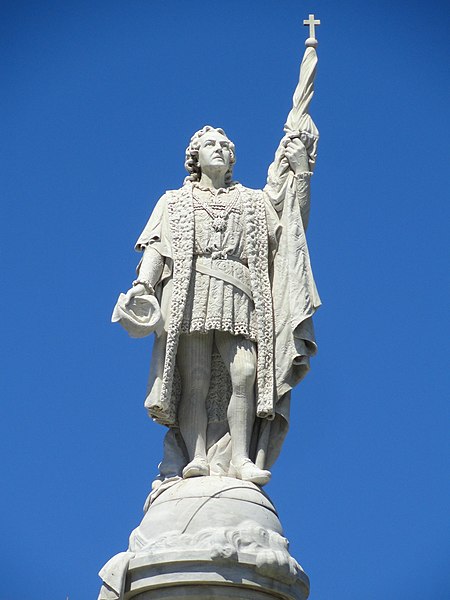
Christopher Columbus
Christopher Columbus And First Voyage
Christopher Columbus was born in Genoa, Italy, in 1451. As a boy he worked at sea, growing up to become an experienced sailor. He later moved to Portugal, seeking funding for a voyage to discover new trade routes to India, China and Japan. To reach this part of the world, other explorers of the time sailed east, around the coast of Africa, but Columbus, knowing that the world was round, decided he would sail west instead, with the hope of finding a shorter route. Eventually King Ferdinand and Queen Isabela of Spain agreed to finance his voyage and he was given three small ships: the Nina, the Pinta, and the Santa Maria. Columbus and his crew set sail on 3rd August, 1492, heading to the Canary Islands for a final restocking before heading west across the Atlantic on the 6th September.
It was on the 12th of October that a sailor aboard the Pinta first spotted land, although Columbus himself tried to claim credit for this first sighting. He was certain he’d discovered an Indian island but the one they’d found was actually part of what is now known as the Bahamas. Despite being populated with “Indians” as he called them, Columbus claimed the island for the king and queen of Spain, naming it San Salvador.
Columbus explored five of the islands in the Bahamas before sailing on, reaching Cuba on the 28th of October. He believed he had now reached China and sent two men on a mission to find the Chinese Emperor. Obviously, the men failed in this mission, but they did discover the smoking of tobacco, a habit which was quickly adopted by the European sailors. On leaving Cuba, Columbus found the island of Hispaniola, what is now Haiti and the Dominican Republic, on the 5th of December, before heading east for home.
A Troubled Return And Legacy
The journey home wasn’t easy either. On the Christmas Day, the Santa Maria, the ship which Columbus himself captained, hit a rock and was wrecked, whilst the Pinta had become separated from the other two ships. Columbus boarded the Nina and took over as Captain, leaving the 39 remaining Santa Maria crew members behind. On the 6th of January, the Pinta was finally reunited with the Nina and the two ships set sail for Spain on the 16th. Columbus initially arrived in Lisbon, Portugal, on the 4th of March 1493 before returning to Spain shortly afterwards.
Columbus has a legacy of being a daring explorer who’d discovered the “New World”. But there are several challenges to that claim. He utterly failed in his mission to find a new trading route to the Far East but, until his dying day in 1506, he was adamant that he’d accomplished exactly that, maintaining his belief that the lands he’d discovered were part of India. Despite being rewarded with money and titles, including Admiral of the Ocean Sea and Governor of the Indies, Columbus had also returned to Spain with one less ship and without the fine silks and rich spices he’d promised. It is also a sad truth that he believed his greatest find during that first voyage was the Indigenous people he’d trafficked to Europe, whom he intended to sell as slaves, thereby launching a new trade in enslaved peoples. Fortunately, these plans for slavery were quashed by Queen Isabela, who disallowed it. Nevertheless, this blight would be brought by many other Europeans who followed his course across the Atlantic in the centuries to come.
Christopher Columbus would go on to make three more voyages west where he explored much of the Caribbean, parts of Central America, and the north coast of Colombia and Venezuela. Despite being known to have discovered the New World, he never actually visited North America. His voyages did, however, trigger a huge wave of European exploration and colonisation of the Americas, leading to centuries of violence and exploitation for the native American people. Perhaps Columbus’ celebrated legacy is not so well-deserved after all.